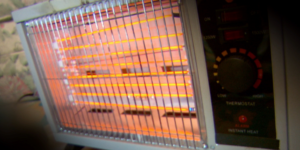Burn Hazards and Prevention Meeting Kit

WHAT’S AT STAKE
WORKPLACE BURNS
Workplace burn injuries are common for some occupations such as electricians, construction workers, firefighters, mechanics, food preparers, janitors, and healthcare professionals.
WHAT’ S THE DANGER
Types of Burns
Thermal- Thermal burns are what most people think of first when burns are mentioned. These burns occur due to contact with a hot surface, fire, hot liquids, or an explosion. Sun burn could be considered a separate type of burn, but we will consider it a thermal burn as well.
Chemical- Chemical burns result from skin or eye contact with a strong acid, corrosive, caustic, or alkaloid. Many of the chemicals used in different processes at many jobsites can result in a chemical burn injury. Some common household products can also produce severe chemical burn if not handled correctly.
Electrical burns- Electrical burns occur where an electrical current has passed through the body. When the current travels through the body the tissue gives it resistance which results in burns. These burns can be both inside and outside of the body. Usually where the burns are on the outside of the body will tell where the electrical current entered and exited the body.
Sun Exposure Burns — Although technically a subset of thermal burns, sun exposure burns require different safety practices than other types of thermal burns. Employees who work long hours in the sun should wear sun-protective work clothing, sunscreen, hats, and sunglasses to reduce the risk of burns.
HOW TO PROTECT YOURSELF
BURN PREVENTION
Thermal- The best way to reduce your chances of suffering from a thermal burn is to eliminate the source of the heat if possible.
Chemical- Eliminate the use of dangerous chemicals whenever possible.
Electrical- Safe work practices are needed to work safely around electricity. Locate and stay away from both underground and overhead powerlines.
MORE BURN PREVENTION
Avoid Chemical Burns
Your employer must use color codes, posters, labels or signs to you of potential workplace hazards. You can best avoid chemical burns by:
- Reading labels and safety data sheet information for chemicals you are working with.
- Wearing personal protective equipment if required.
- Knowing where to locate your first aid, eye wash, and fire equipment.
Prevent Thermal Burns
Personal protective equipment (PPE), such as goggles, respirators, or body protection can help prevent some types of thermal burn injuries.
Construction job sites are highly prone to fires, but this risk can be mitigated by adopting fire prevention tactics, such as:
- smoking at the job site.
- Not Keeping job sites free of trash and debris.
- Using flame retardant materials where possible.
Avoid Electrical Burns
- Wear appropriate personal protective equipment
- Follow Lock-Out/Tag-Out procedures
- Know the location of electrical sources in your workplace
- Avoid contact with water when working with electricity
FINAL TAKEAWAYS
Employers and Workers must actively try to lessen the risks. Awareness, implementation of controls, and protective measures can be very effective in reducing burn hazards.
It’s important that employers and workers be aware of these common burn types and make the effort to identify, control, and avoid/reduce potential burn hazards in the workplace. Important preventative measures include:
- Keeping the workplace clean and free of debris.
- Making sure workplace fire extinguishers are properly maintained and in working order.
- Storing combustible and flammable items properly and keeping them away from ignition sources.
- Wearing the proper personal protective equipment for the hazard.
- Being extra cautious around chemicals and any hot liquids, materials, or surfaces.
- Reading the labels and Safety Data Sheets for chemicals in the workplace.
- Having emergency plans in place.
- Following Lock-Out / Tag-Out procedures when working with electricity.
FINAL WORD
A burn accident can be fatal, and safety precautions are paramount. Employers should ensure that workers have protective gear and the knowledge to keep them safe from burn injuries.